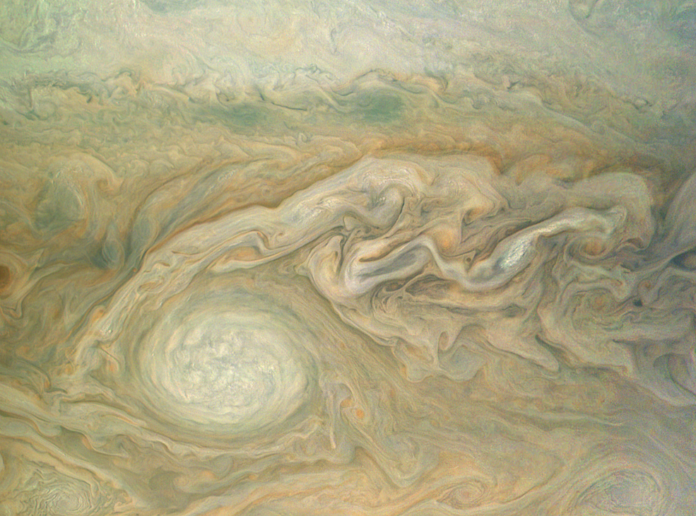
NASA’s Juno has brought all cheers to the Juno team. Although been a long time since it has made any news, the news it has brought is really appreciated.
Juno mission accomplished a close flyby of Jupiter on May 19. This marks the success as it was the fifth science flyby of the mission. It completed its fifth science orbit.
All of Juno’s science instruments worked well during this flyby. The spacecraft’s JunoCam, operating during the flyby, collected data. It is now returning these to the Earth. NASA confirmed that Juno’s next close flyby of Jupiter will occur on July 11, 2017. This flyby will focus the Jupiter’s Great Red Spot.

Credits: NASA/JPL-Caltech
At the time of perijove the spacecraft logged 102 million kilometers in Jupiter’s orbit. Perijove is the point in Juno’s orbit when it is closest to the planet’s center. It was at a distance of about 3,500 kilometers above the planet’s cloud tops during the flyby.
Juno launched on Aug. 5, 2011, from Cape Canaveral, Florida, and arrived in orbit around Jupiter on July 4, 2016. During its mission of exploration, Juno soars low over the planet’s cloud tops. During these flybys, Juno is probing beneath the obscuring cloud cover of Jupiter. It is also studying its auroras to learn more about the planet’s origins, structure, atmosphere and also magnetosphere.
NASA’s Jet Propulsion Laboratory manages the Juno mission for the principal investigator, Scott Bolton, of Southwest Research Institute in San Antonio.
























